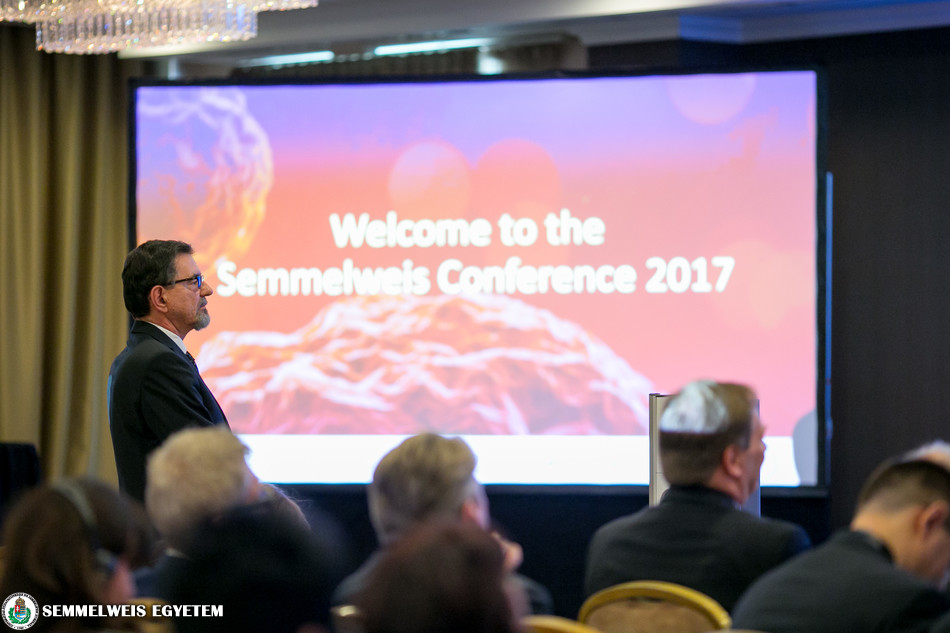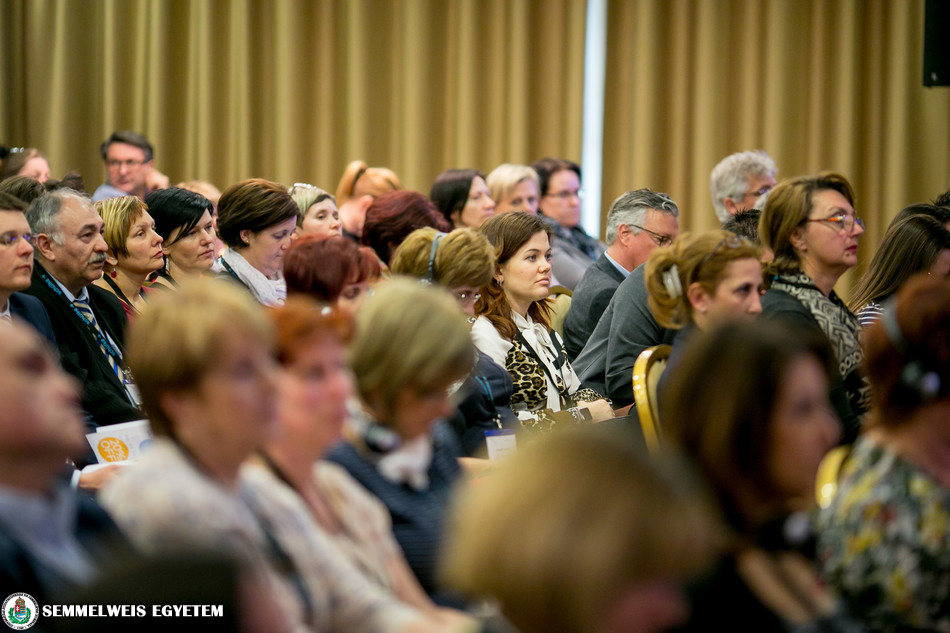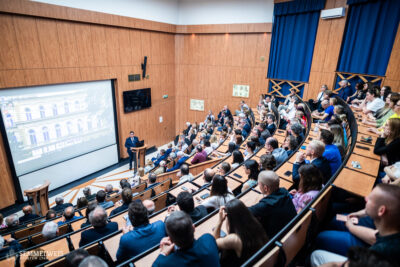 The Semmelweis Foundation located in Vienna has organized its international conference entitled Conference on Hospital Hygiene and Patient Safety for the second time on March 7-8, 2017 in Budapest. During the opening ceremony of the 2-day conference among others Dr. Ágoston Szél, Rector of Semmelweis University held an opening speech, as the leader of the largest and most renowned institution bearing the name of Ignaz Semmelweis.
The Semmelweis Foundation located in Vienna has organized its international conference entitled Conference on Hospital Hygiene and Patient Safety for the second time on March 7-8, 2017 in Budapest. During the opening ceremony of the 2-day conference among others Dr. Ágoston Szél, Rector of Semmelweis University held an opening speech, as the leader of the largest and most renowned institution bearing the name of Ignaz Semmelweis.
“The main purpose of this conference was to raise attention to the importance of hospital hygiene and the prevention of infections. Since this is a problem that goes beyond boundaries, it is especially important that specialists of the related areas have the opportunity to share their experiences and good practice among each other. Specialists from many countries participated in this conference, and the entire Central-Eastern European region was represented as well. The keys to serve as remedy in this situation are communication and cooperation, for which the conference itself also provided a suitable occasion. An efficient attitude can only operate successfully with the cooperation of decision makers, science, health care, industry and NGOs.”, emphasized Dr. Bernhard Küenburg, President of the Semmelweis Foundation.
 “Ignaz Semmelweis discovered the connection between childbed fever and handwashing with chlorinated lime well ahead of his time, without even knowing anything about microbes. … For us the years 2015 and 2018 have a great relevance. During the summer of 2015 we commemorated Ignaz Semmelweis on the 150th anniversary of his death at the courtyard of his birthplace. Next year, on July 1, 2018 we are going to hold a ceremony on the occasion of the 200th anniversary of his birth. … A sculpture was made about Ignaz Semmelweis in Chicago among the 10 greatest physicians of the world. His sculpture, together with a mother rescued by him and the mother’s little child, is standing in the building of the International Museum of Surgical Science in the company of Louis Pasteur and Wilhelm Conrad Röntgen. … Nowadays we can celebrate the outstanding reputation of the Semmelweis doctrine to such an extent, which provides the ‘greatest physician’ title for Ignaz Semmelweis. … May the spirit of his work and the relevance of his discovery serve as a guideline.”, highlighted Rector Szél in his opening speech.
“Ignaz Semmelweis discovered the connection between childbed fever and handwashing with chlorinated lime well ahead of his time, without even knowing anything about microbes. … For us the years 2015 and 2018 have a great relevance. During the summer of 2015 we commemorated Ignaz Semmelweis on the 150th anniversary of his death at the courtyard of his birthplace. Next year, on July 1, 2018 we are going to hold a ceremony on the occasion of the 200th anniversary of his birth. … A sculpture was made about Ignaz Semmelweis in Chicago among the 10 greatest physicians of the world. His sculpture, together with a mother rescued by him and the mother’s little child, is standing in the building of the International Museum of Surgical Science in the company of Louis Pasteur and Wilhelm Conrad Röntgen. … Nowadays we can celebrate the outstanding reputation of the Semmelweis doctrine to such an extent, which provides the ‘greatest physician’ title for Ignaz Semmelweis. … May the spirit of his work and the relevance of his discovery serve as a guideline.”, highlighted Rector Szél in his opening speech.
“The National Center for Epidemiology has an important role in the field of infection control and hospital hygiene. The national surveillance system is also being operated by the National Center for Epidemiology. The dynamic development of medicine and technology involves the increase of the number of challenges professionals have to face. Success can only be achieved by a harmonized communication and a multidisciplinary cooperation.”, expressed Dr. Beatrix Oroszi, Director-General of the National Center for Epidemiology.
 Representing the Federal Ministry of Health of Austria, Dr. Reinhild Strauss welcomed the participants of the conference. Dr. Strauss highlighted the significance of scientific organizations, with the help of which pilot projects can be established in the field of infection control and hospital hygiene. This would entail the arrangement and establishment of further development. According to Dr. Strauss an appropriate education and information transfer to professionals and the population serve as the main factors in the efficient prevention of infections.
Representing the Federal Ministry of Health of Austria, Dr. Reinhild Strauss welcomed the participants of the conference. Dr. Strauss highlighted the significance of scientific organizations, with the help of which pilot projects can be established in the field of infection control and hospital hygiene. This would entail the arrangement and establishment of further development. According to Dr. Strauss an appropriate education and information transfer to professionals and the population serve as the main factors in the efficient prevention of infections.
The opening lecture of the conference entitled “The Semmelweis Story: Can It Happen Again?” was held by Dr. Didier Pittet, WHO specialist. In his lecture Dr. Pittet went through the life story of Ignaz Semmelweis, how he discovered the fact that physicians carried the infections from the dissection rooms to the labour rooms. Dr. Pittet emphasized that Semmelweis’ behaviour was clearly similar to what a real clinical epidemiologist would have done in that situation.
The mission of the Viennese Semmelweis Foundation, founded in 2012, is to contribute to the reduction of the resistance against antimicrobial drugs, as well as to the amelioration of reaching the appropriate hygienic level in health care institutions. Furthermore, one if its aims is to provide information to health care professionals and the civil sphere. An important element of the activities of the foundation is to share the best practical experiences and to mutually learn from each other.
Pálma Dobozi, Ágnes Raubinek
Photo: Attila Kovács – Semmelweis University
Translated by: Katalin Romhányi







